DEFINITION OF TERMS:
- KEYSTONE means they are listed by National Wildlife Federation as core plants for a wildlife garden in my ecoregion (Ecoregion 8).
- NOT QUITE NATIVE means they are slightly out of range but adjacent to NYS as determined by GoBotany and NY Flora Atlas.
- Otherwise the plant is a NY-native or native to the area noted.
SOUTHEAST NATIVE: Sweetspire (Itea virginica ‘Henry’s Garnet’)
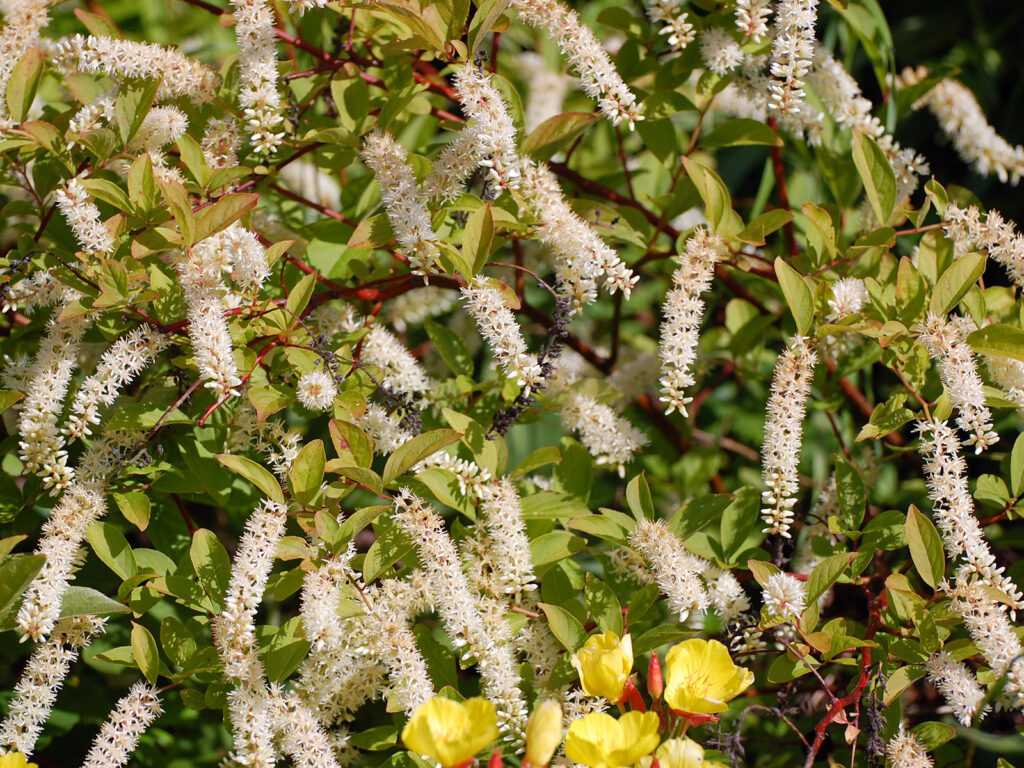
Itea blooms early in the summer and is covered with “spires” of white flowers.
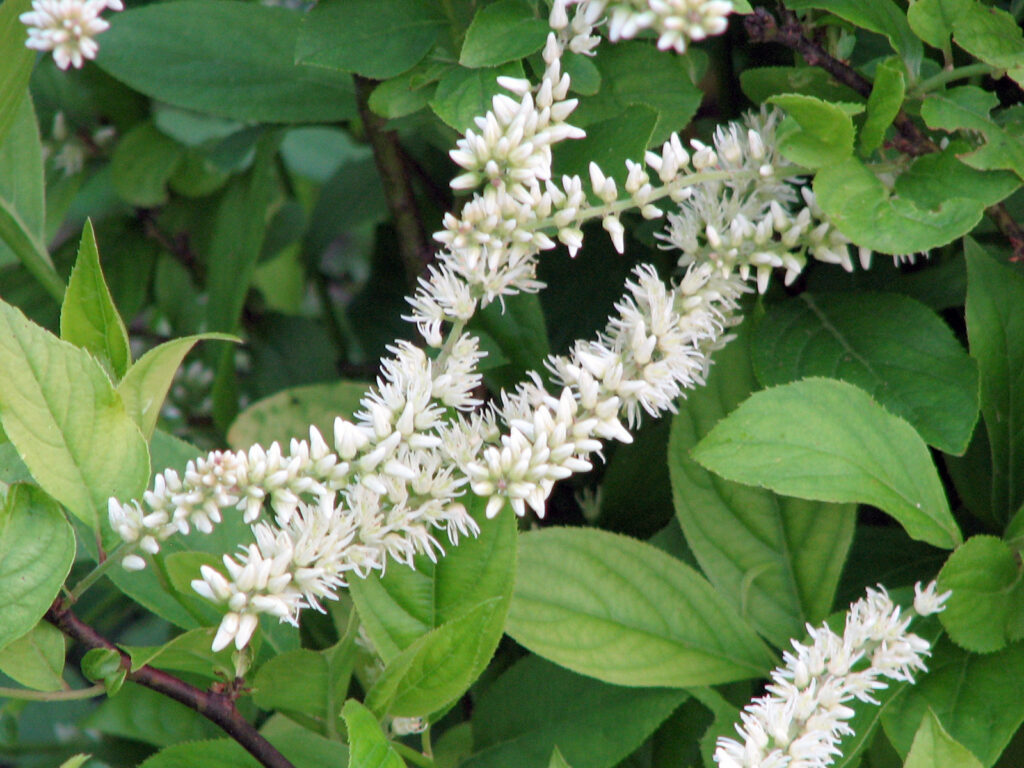
Here’s a closeup of the flowers.
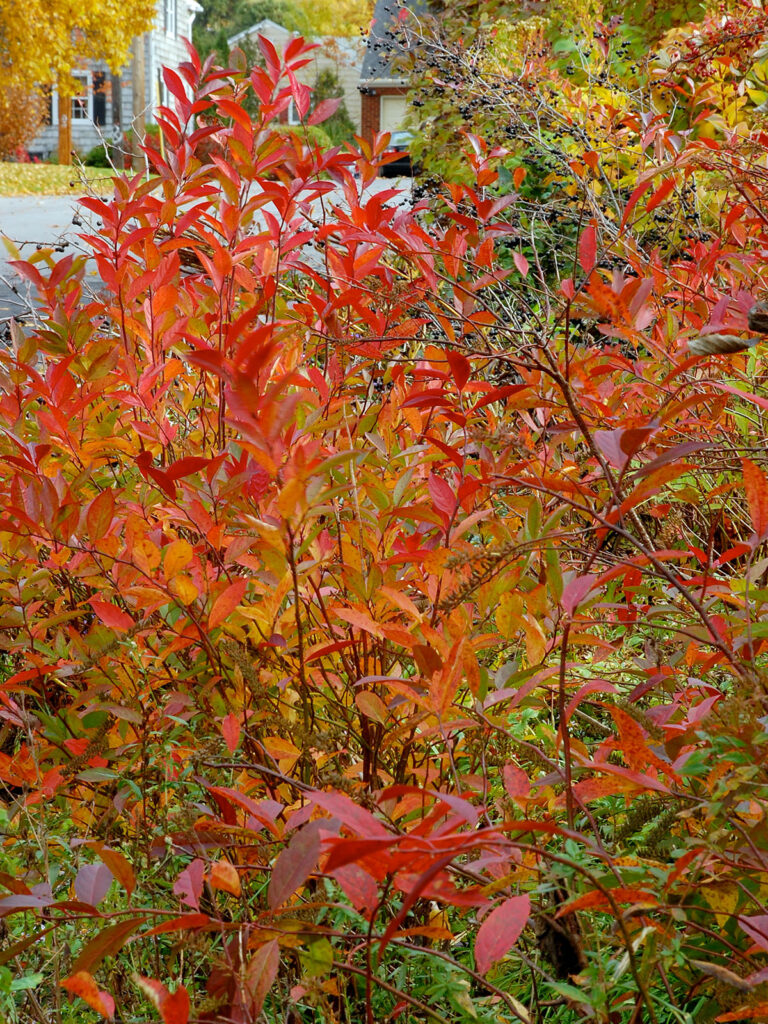
Itea is glorious in the fall. In fact, this cultivar is called ‘Henry’s Garnet,’ hinting at the beautiful fall display. I also have some ‘Little Henry’ plants. I don’t know if the plain species is as readily available as the cultivars.
I since learned that it’s native a little farther south from here. We didn’t use BONAP to check native ranges back then, nor did we have access to native plants we have now with our HGCNY plant sales.
Wildlife: Cover; nectar for insects
- Learn more:
- Wildflower Center: Sweetspire
Mountain laurel (Kalmia latifolia)
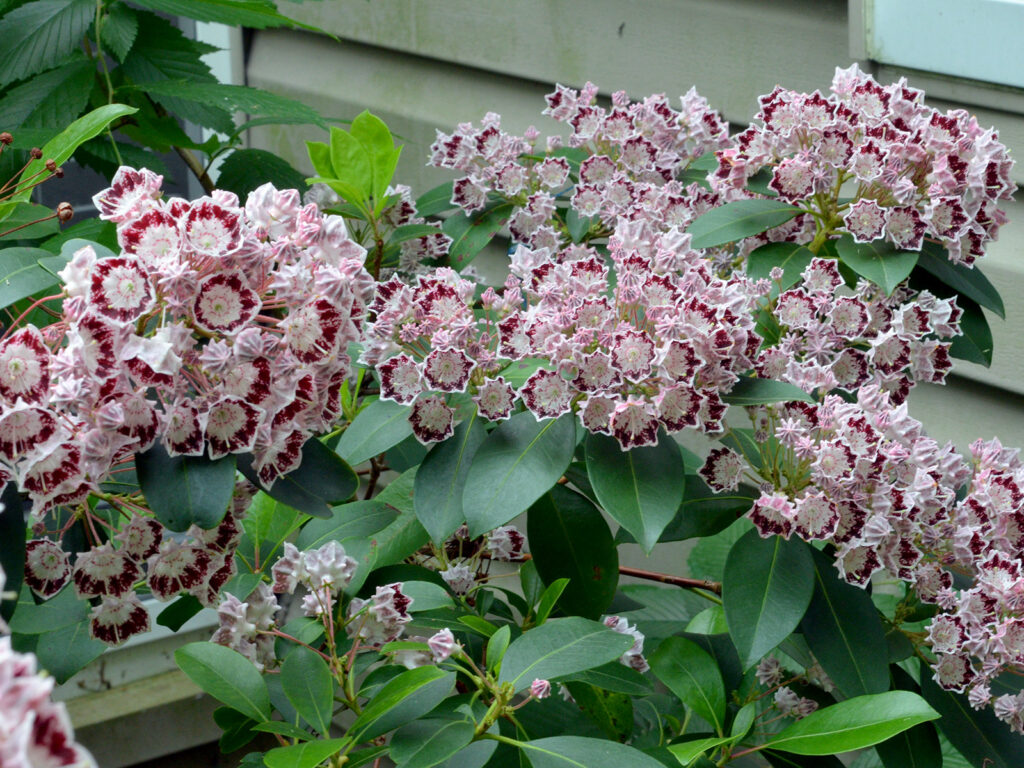
Like rhododendron, these like acidic soil, which we don’t have. Amazingly, it has survived with a heavy dose of benign neglect.
When it blooms, though, I always wish I took care of it better (acidifying the soil more regularly, removing some competing plants, and so on).
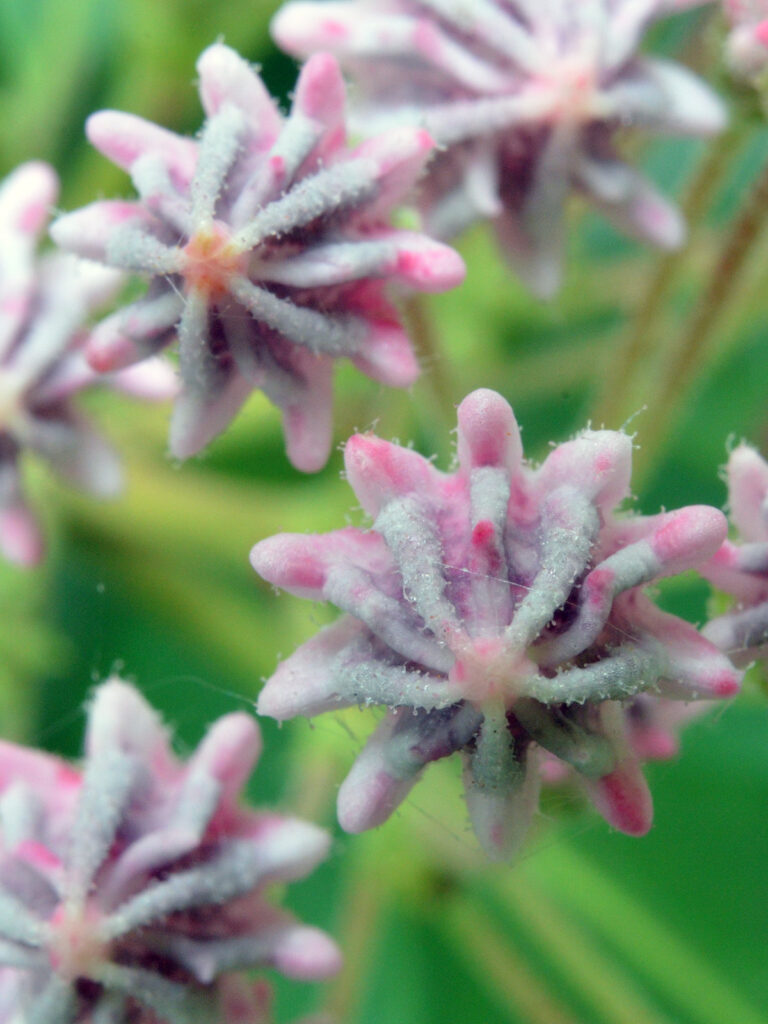
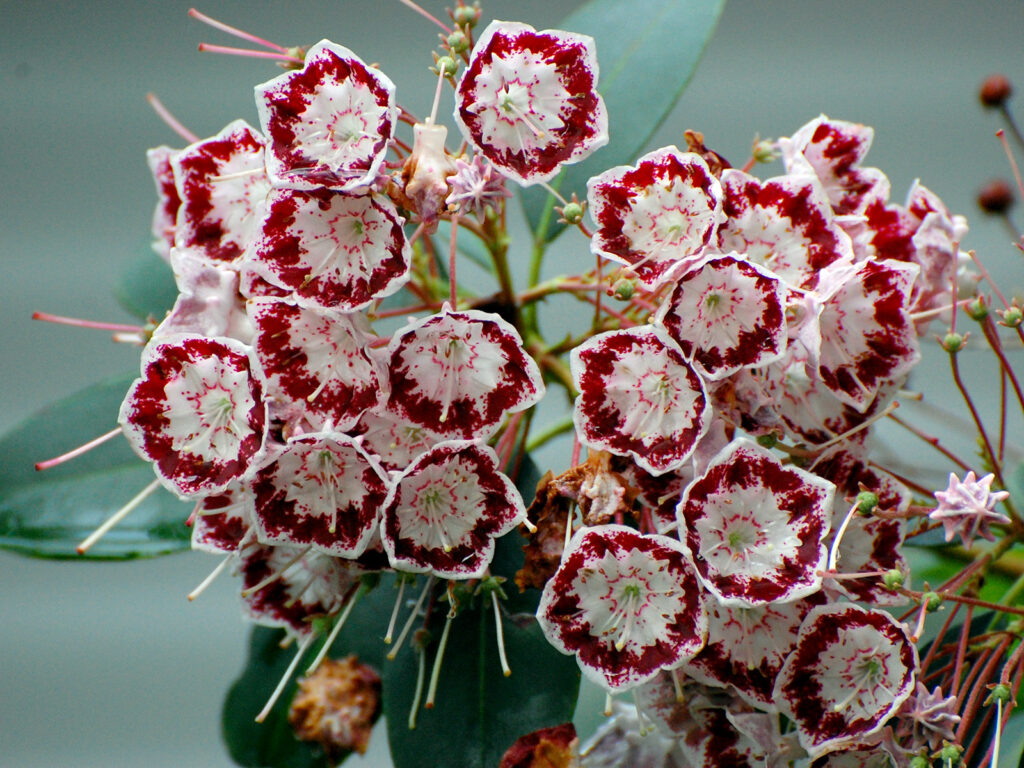
Larval host: Laurel sphinx
- Learn more:
- Wildflower Center: Mountain laurel
Spicebush (Lindera benzoin)

Spicebush flowers very early in the spring. It doesn’t make as spectacular display as the non-native forsythia, perhaps, but the flowers are charming and create a yellow glow.
The biggest difference, however, is that the spicebush provides benefits all year — flowers for nectar, leaves for caterpillars, and berries for birds — whereas forsythia merely “decorates” yards for a few weeks.
Contrast those benefits with the popular non-native forsythia. Some call forsythia “the yellow vomit of spring” because it’s everywhere, but provides no habitat benefits at all. It doesn’t host any native insects, it doesn’t provide quality cover, it produces no berries or seeds.
We planted this plant primarily because it’s the larval host plant (i.e. caterpillar food plant) for — what else? — the spicebush swallowtail butterfly as well as for the Eastern swallowtail and tiger swallowtail butterflies.
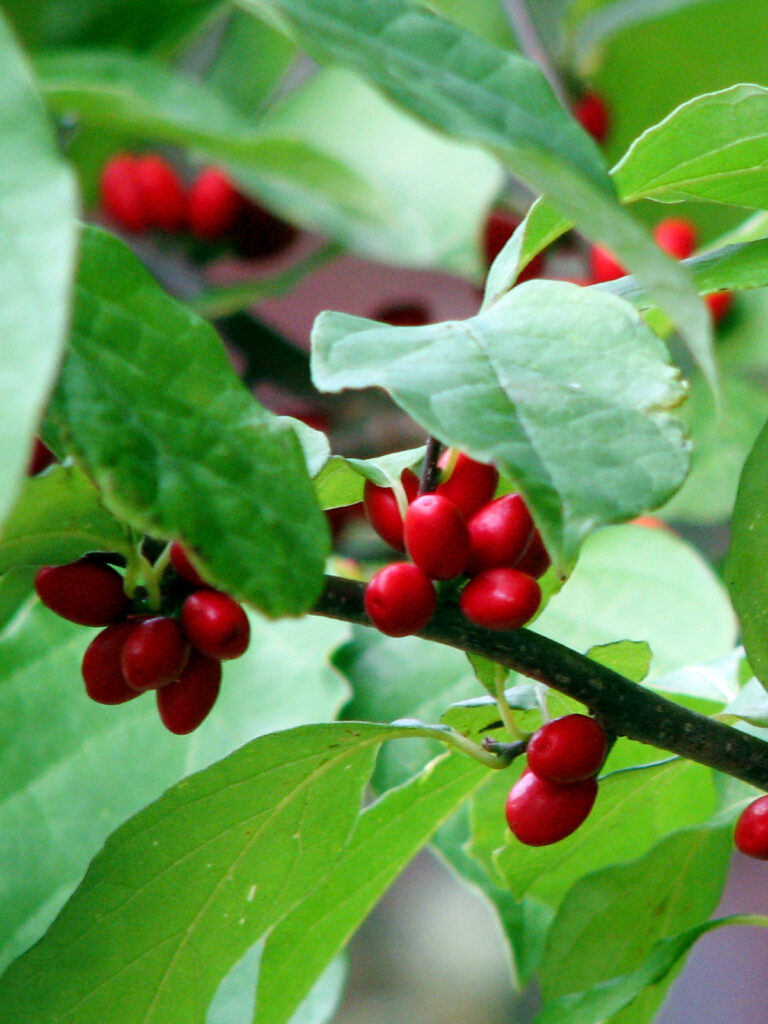
Its berries are somewhat small and were quite sparse the first few years. Finally, though, they’re abundant.
We since learned that they’re an especially nutritious berry for birds, since they’re loaded with fat rather than sugar. Fat is important for migrating birds. These native berries ripen in the fall migration season, not in the summer.
This is another one of those dioecious (separate male and female) plants, though we didn’t know it at the time. (In fact, the conventional nursery we bought them from didn’t know that either!) The flowers of the male plant are much larger than the female flowers.
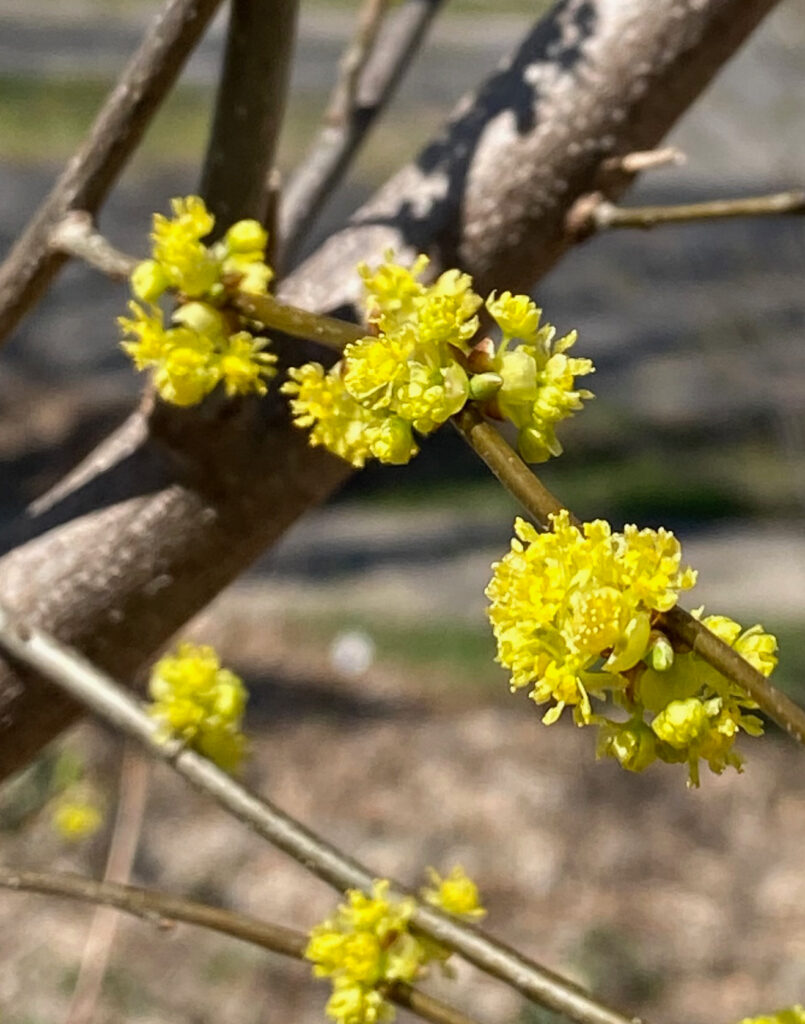
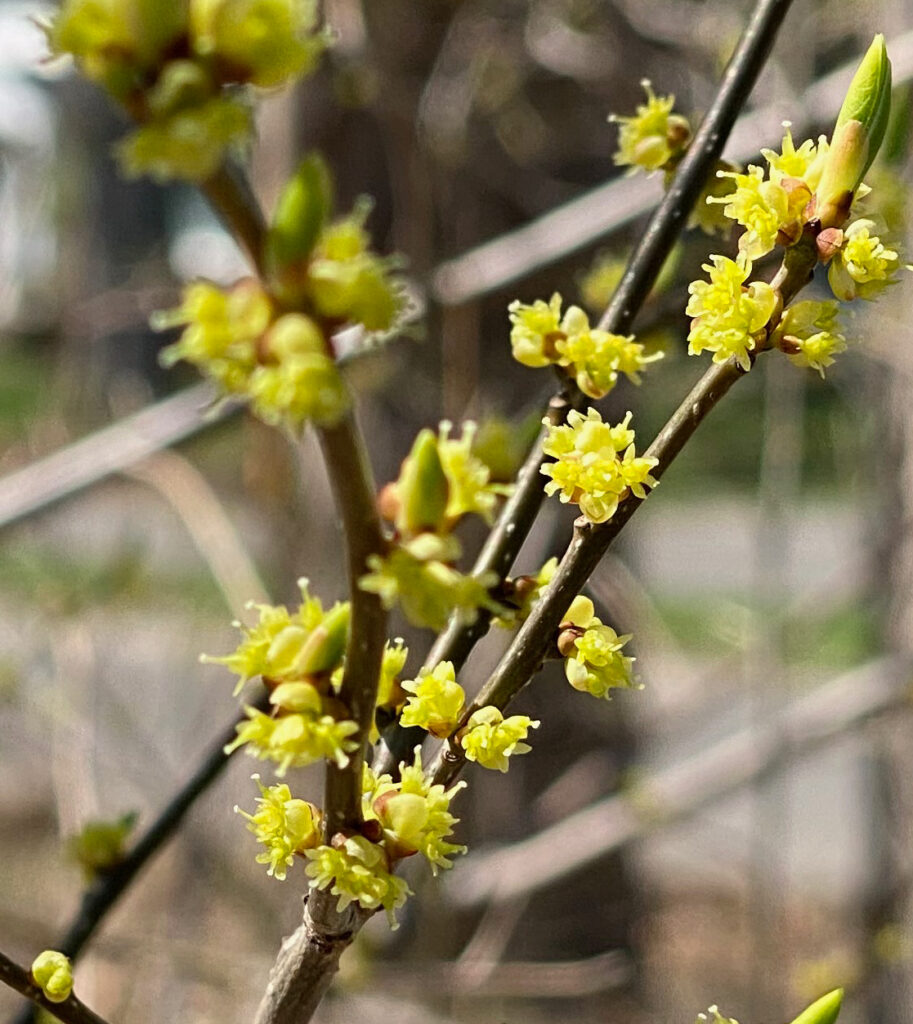
When we bought our first two spicebushes, we bought large, expensive plants. We later bought three more seedling plants, and they grew to the size of the expensive ones pretty quickly. Whether male or female, we kept them all since we’re interested in them as a larval host plant, not just in the berries.
NOTE: Since they aren’t labeled, most people just buy five or six small plants and see what they end up with, then get rid of the extra males. This is not as wasteful or expensive as it sounds since the seedlings are inexpensive, and they grow quite fast.
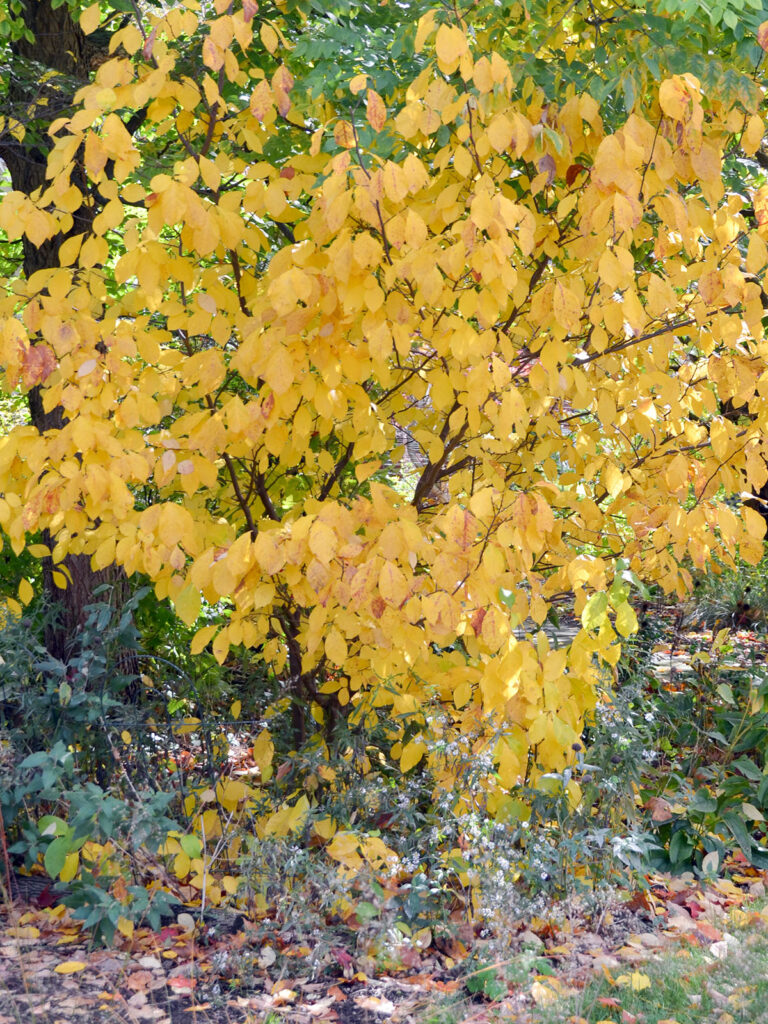
Wildlife: Berries for birds
Larval host: Eastern tiger swallowtail, spicebush swallowtail, Pormethea silkmoth
- Learn more:
- Wildflower Center: Northern spicebush
- Penn State Extension: Spice up your garden with spicebush
- Wild Seed Project: Northern spicebush
KEYSTONE: Northern bayberry (Morella pensylvanica Syn: Myrica pensylvanica)
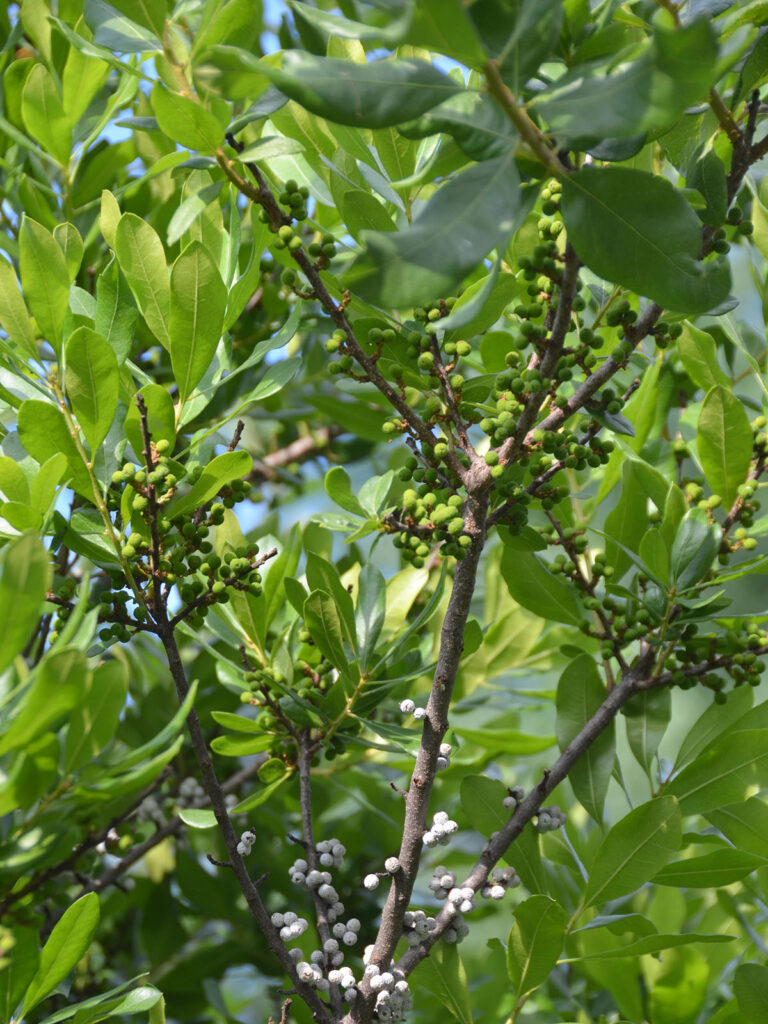
We love the look of the foliage.
Most people think of candles when they think of bayberry, though they may not know it refers to this shrub whose berries are more than 50% fat, and that colonists used the waxy coating to make actual candles. The leaves and stems of this plant are very fragrant when crushed.
The green berries are the unripe ones, and they turn gray when ripe.
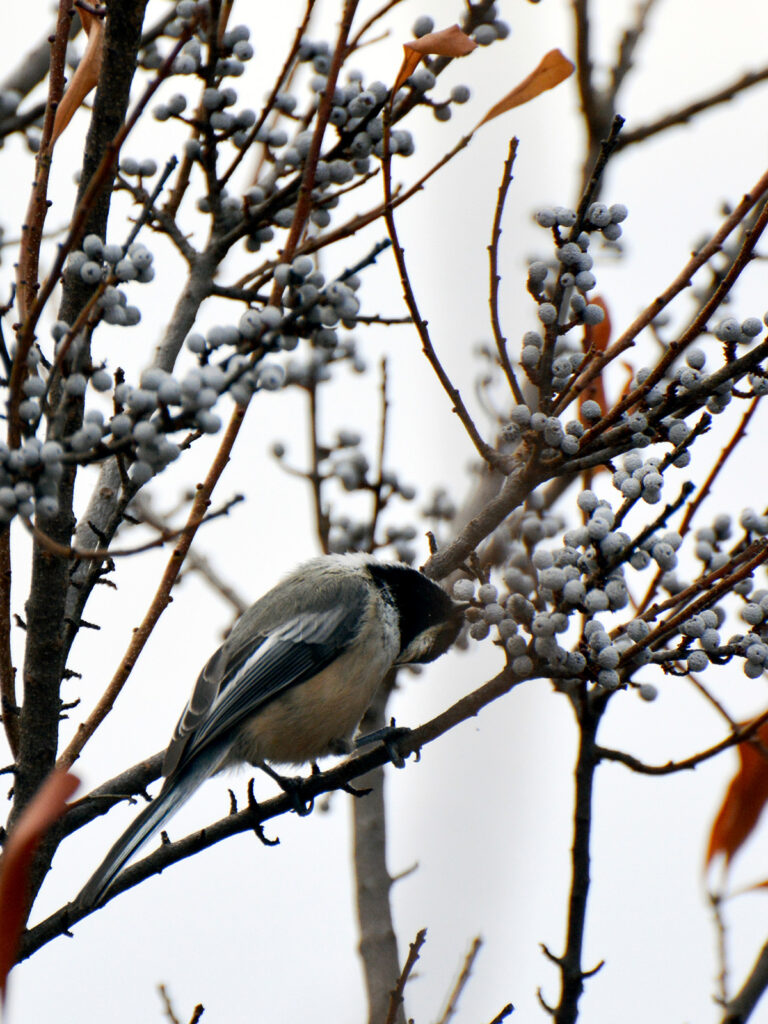
More important, their high fat content berries make them especially good for migrating and overwintering birds. Our catbirds also appreciate the leftover berries when they return in spring after their long journey north.
Use Wildlife: Eaten by many winter birds.
Attracts: Birds , Butterflies
Larval Host: Columbia silkmoth
- Learn more about bayberry:
- Wildflower Center: Northern bayberry
- NY Times: A fragrant shrub that smells like winter
- Penn State Extension: Bayberry
Potentilla (Potentilla fruticosa)
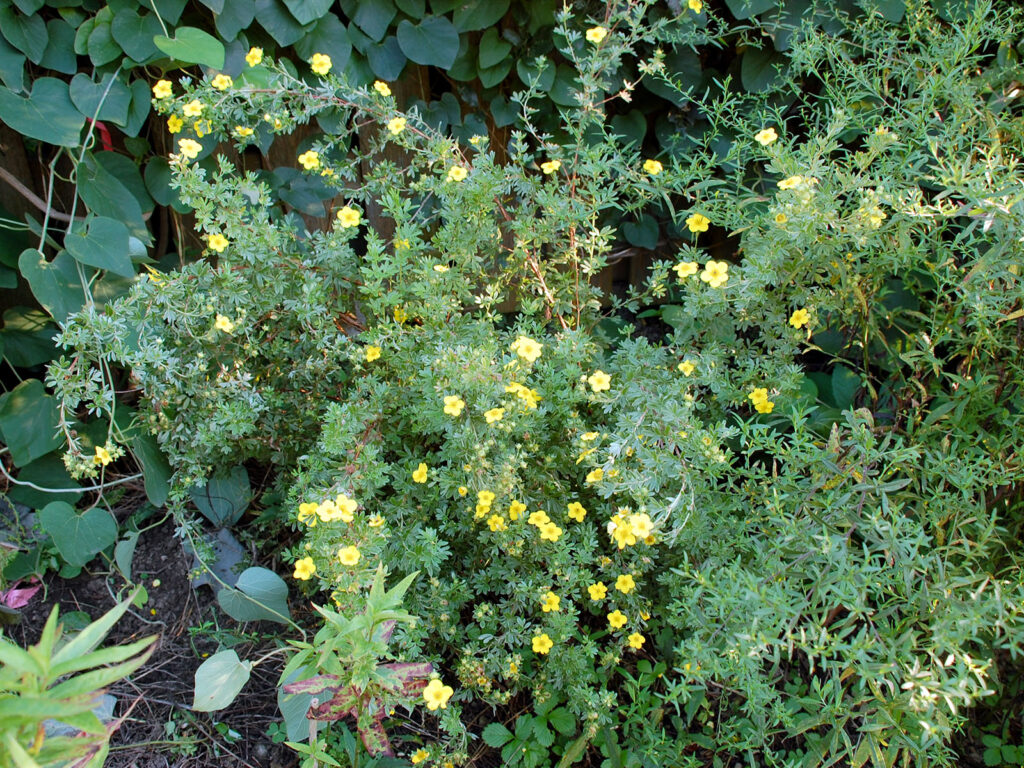
For many years, this has been hidden behind a non-native doublefile viburnum (Viburnum plicatum var. tomentosum). I finally cut down the viburnum, so now the potentilla is getting a chance to thrive. I cut it back almost to the ground so it could grow back in a more upright form rather than off to the side, trying to get some breathing room. So far, it’s doing well.
Wildlife: Butterflies
** SPECIAL VALUE TO NATIVE BEES **
** SUPPORTS CONSERVATION BIOLOGICAL CONTROL **
- Learn more about potentilla:
- Wildflower Center: Potentilla
Beach plum (Prunus maritima)
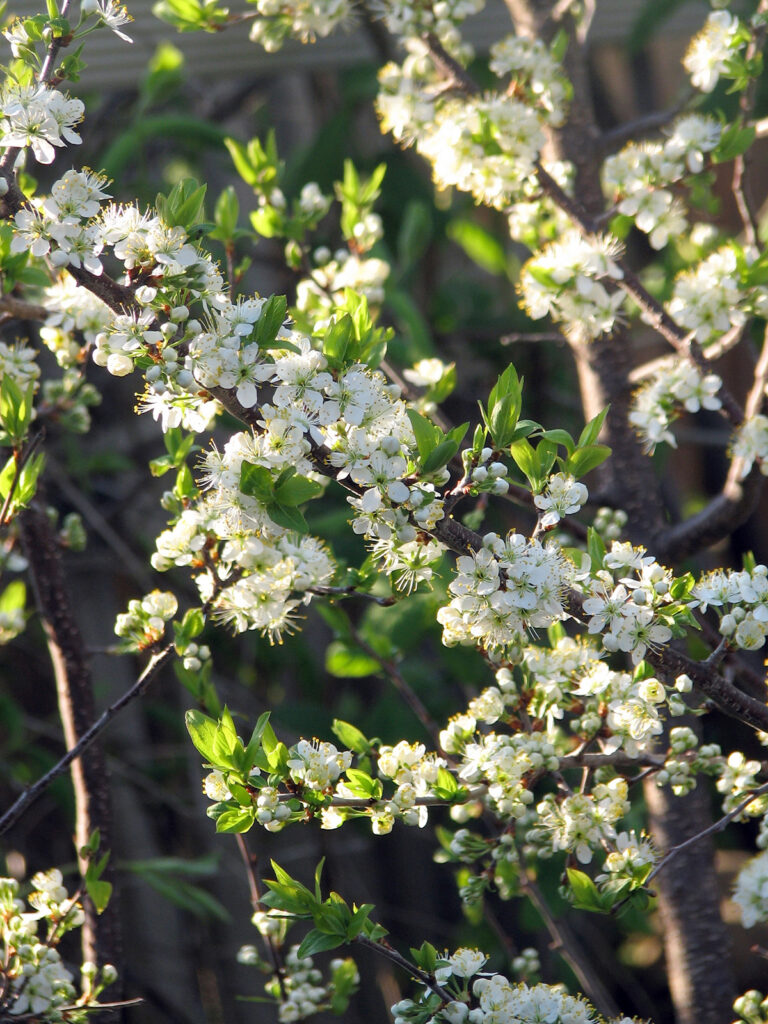
We bought this as a seedling, and it did really well. It never got a chance to produce plums, though, since its location (near our blueberries) made it impossible to put up the blueberry netting, so sadly we had to remove it. We still have two smaller varieties, though they’re not in ideal locations, either.
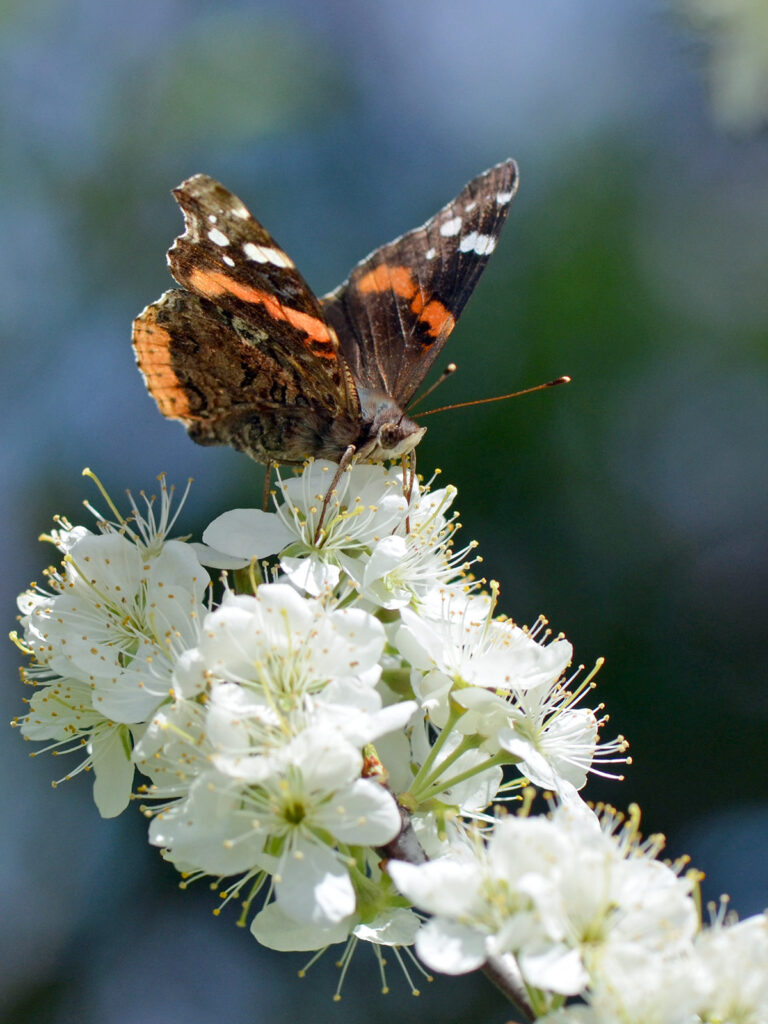
Even though we aren’t planning to leave the fruits for wildlife, the plentiful blossoms were a boon for pollinators. We found that it was a special favorite when the red admiral butterflies moved through in the spring, along with some question marks (yes, that’s actually the name of a type of butterfly!)
Wildlife: Fruit for birds
** SPECIAL VALUE TO NATIVE BEES **
- Learn more:
- Wildflower Center: Beach plum
